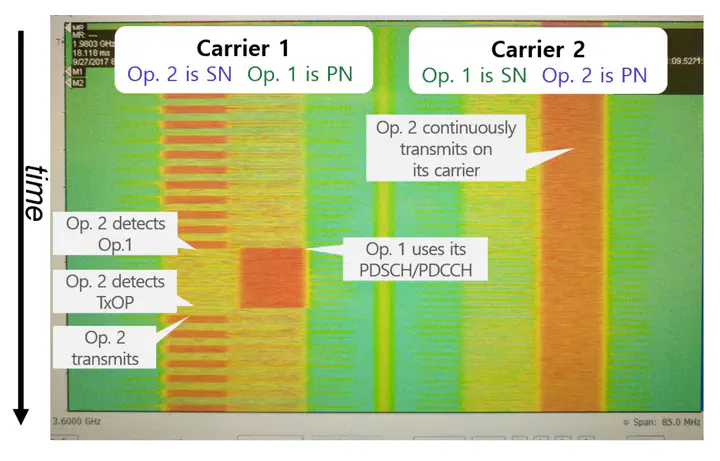
Abstract
The upcoming deployments of devices on the new 3.5 GHz, Citizens Broadband Radio Service (CBRS) is expected to enable innovation by lowering the barrier to entry into LTE and other technologies. With a three-tiered spectrum-sharing solution, the CBRS band promises to allow coexistence of federal incumbent users, priority licensees, and general users. While there have been many works studying cellular traffic offloading to unlicensed bands (e.g., Licensed Assisted Access) or minimizing interference in Cognitive Radio Networks, there has been comparatively little work on maximizing spatial reuse of spectrum in a shared spectrum CBRS network. Hence, the essence of this work is to leverage listen-before-talk (LBT) schemes over a CBRS network for increasing the spatial reuse at secondary (general) users while minimizing the interference footprint on higher-tier (incumbent) users. In this work, we propose LBT schemes that allow opportunistic access to licensed, CBRS spectrum and test our LBT schemes on a custom testbed with multiple software-defined radios and a real-time signal analyzer. We find that by allowing LBT spectrum sharing in a two carrier, two eNB scenario, we see upwards of 50% user perceived throughput (UPT) gains for both eNBs. Furthermore, we examine the use of Q-learning to adapt the energy-detection threshold (EDT), combating problematic topologies such as hidden and exposed nodes. When adapting the EDT of opportunistically transmitting nodes, we see up to 350% gains in average secondary node UPT in certain difficult topologies with merely a 4% reduction in primary node UPT.